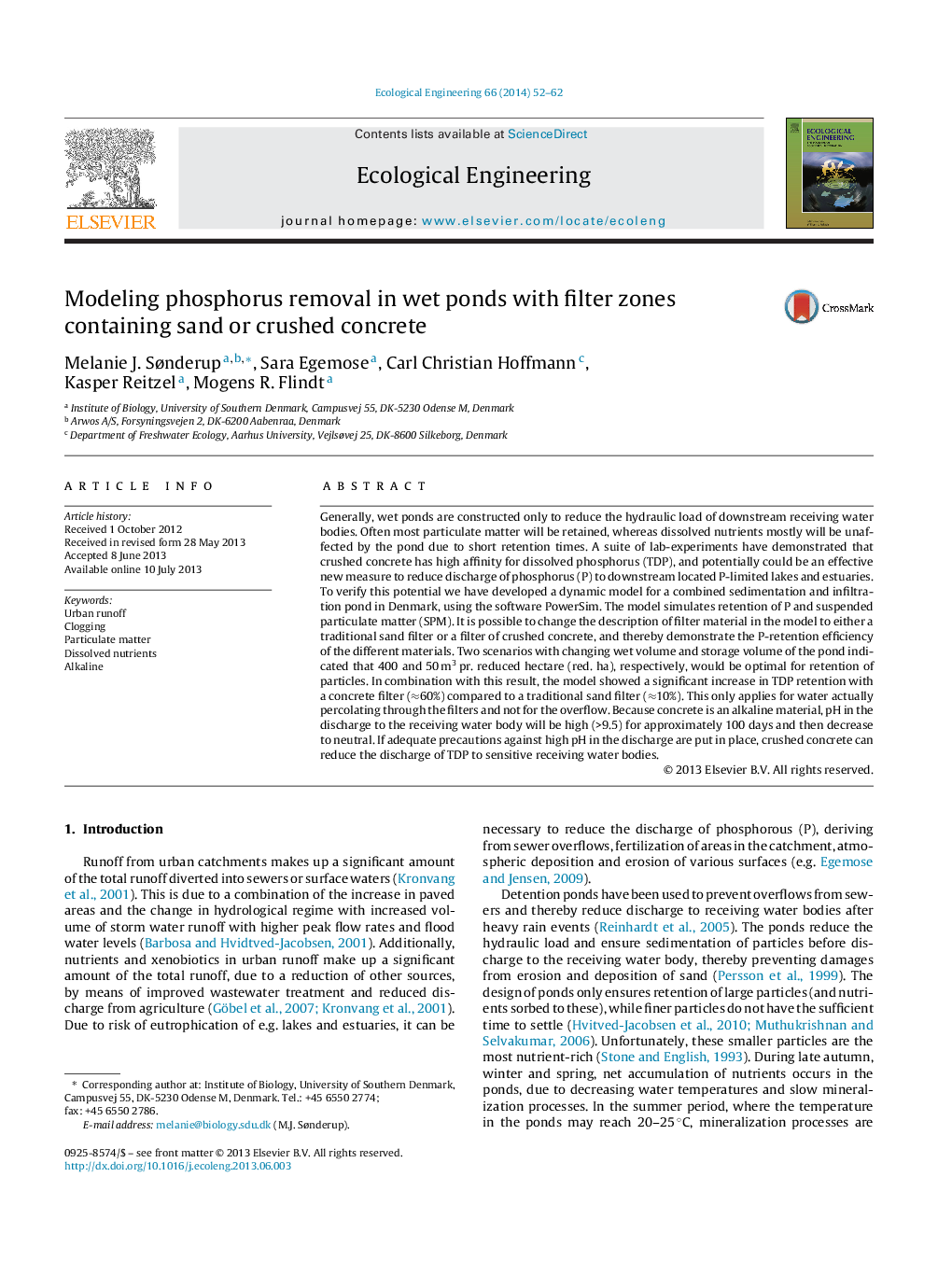| کد مقاله | کد نشریه | سال انتشار | مقاله انگلیسی | نسخه تمام متن |
|---|---|---|---|---|
| 4389538 | 1618033 | 2014 | 11 صفحه PDF | دانلود رایگان |
• Phosphorous removal was studied in filters with sand and crushed concrete.
• Set-up of a dynamic model for a combined sedimentation and infiltration pond.
• We can simulate removal of phosphorous and suspended particulate matter.
• Model based design of ponds optimize the phosphorous removal efficiency.
• Dissolved phosphorous is ineffective removed in wet ponds, but what about filters?
Generally, wet ponds are constructed only to reduce the hydraulic load of downstream receiving water bodies. Often most particulate matter will be retained, whereas dissolved nutrients mostly will be unaffected by the pond due to short retention times. A suite of lab-experiments have demonstrated that crushed concrete has high affinity for dissolved phosphorus (TDP), and potentially could be an effective new measure to reduce discharge of phosphorus (P) to downstream located P-limited lakes and estuaries. To verify this potential we have developed a dynamic model for a combined sedimentation and infiltration pond in Denmark, using the software PowerSim. The model simulates retention of P and suspended particulate matter (SPM). It is possible to change the description of filter material in the model to either a traditional sand filter or a filter of crushed concrete, and thereby demonstrate the P-retention efficiency of the different materials. Two scenarios with changing wet volume and storage volume of the pond indicated that 400 and 50 m3 pr. reduced hectare (red. ha), respectively, would be optimal for retention of particles. In combination with this result, the model showed a significant increase in TDP retention with a concrete filter (≈60%) compared to a traditional sand filter (≈10%). This only applies for water actually percolating through the filters and not for the overflow. Because concrete is an alkaline material, pH in the discharge to the receiving water body will be high (>9.5) for approximately 100 days and then decrease to neutral. If adequate precautions against high pH in the discharge are put in place, crushed concrete can reduce the discharge of TDP to sensitive receiving water bodies.
Journal: Ecological Engineering - Volume 66, May 2014, Pages 52–62
